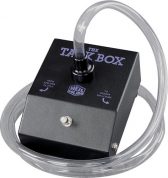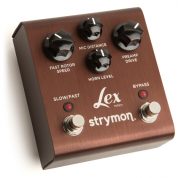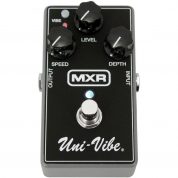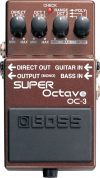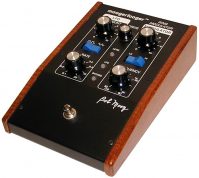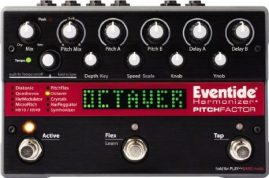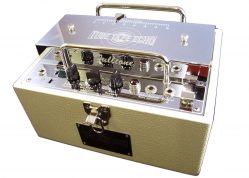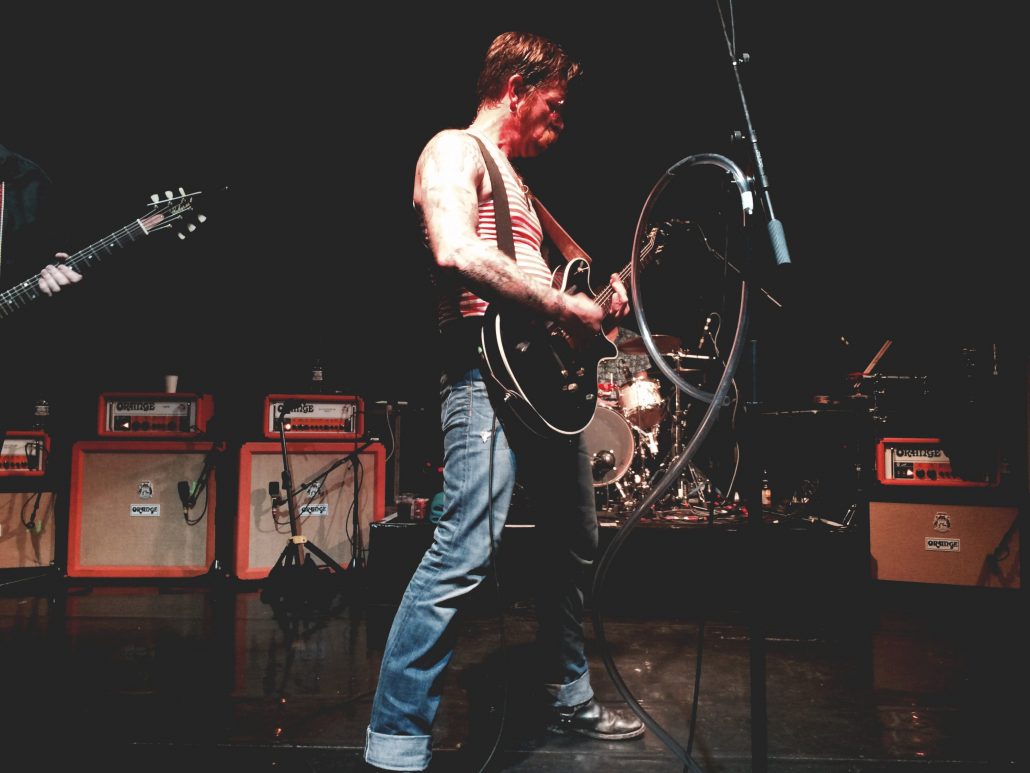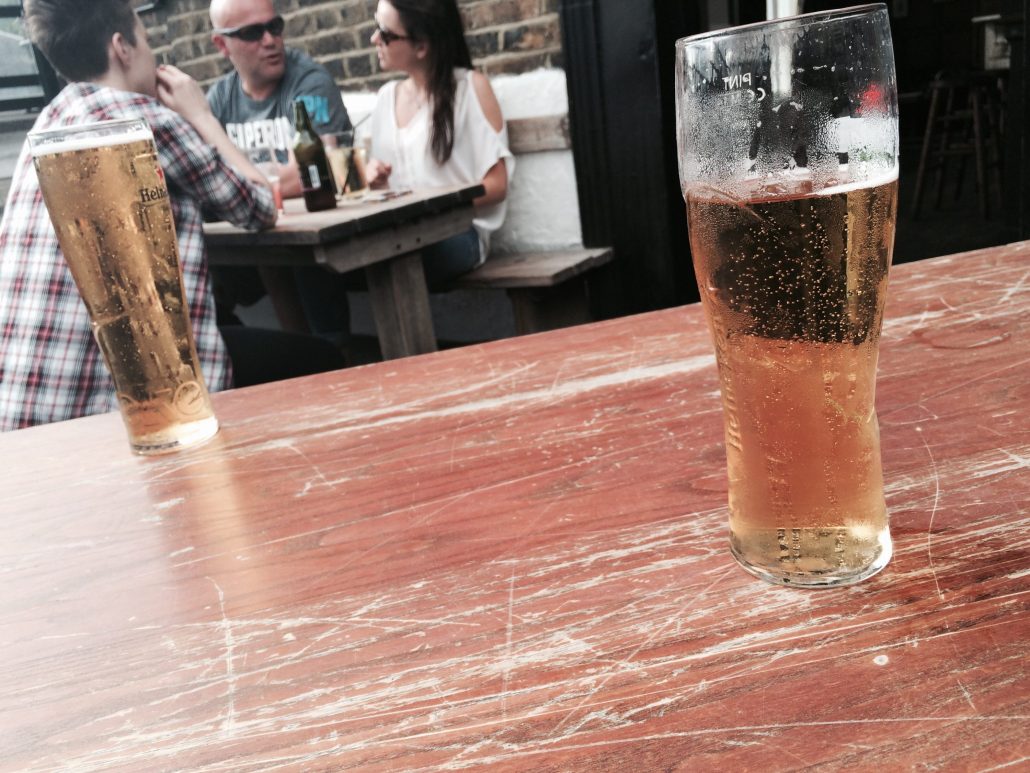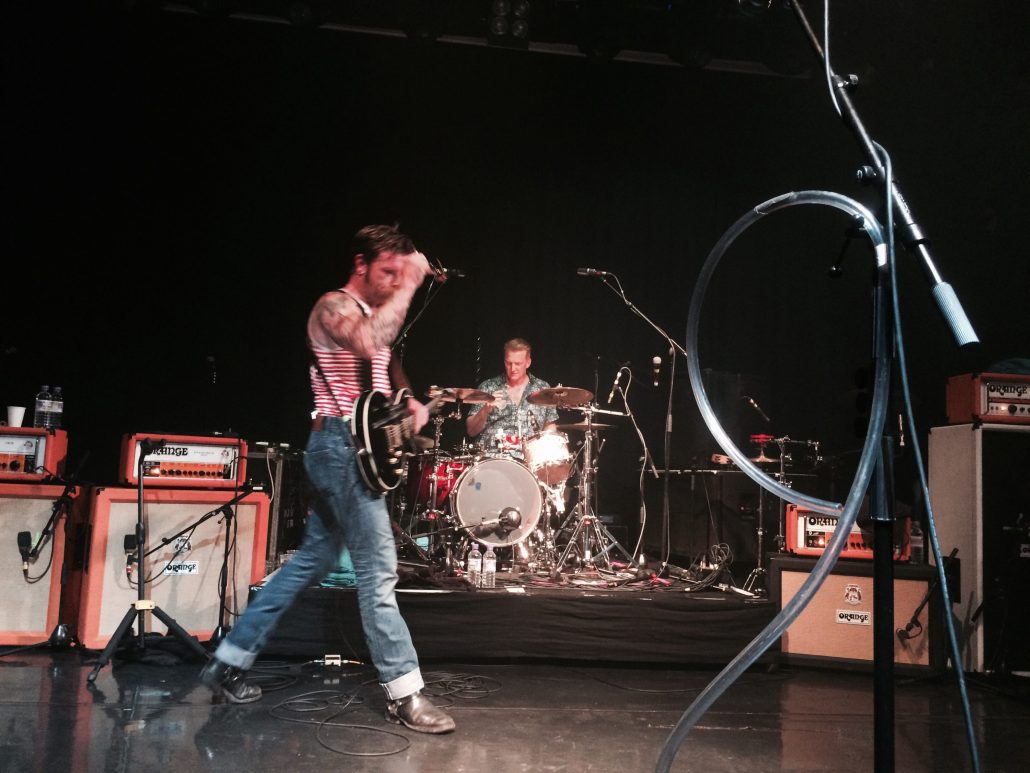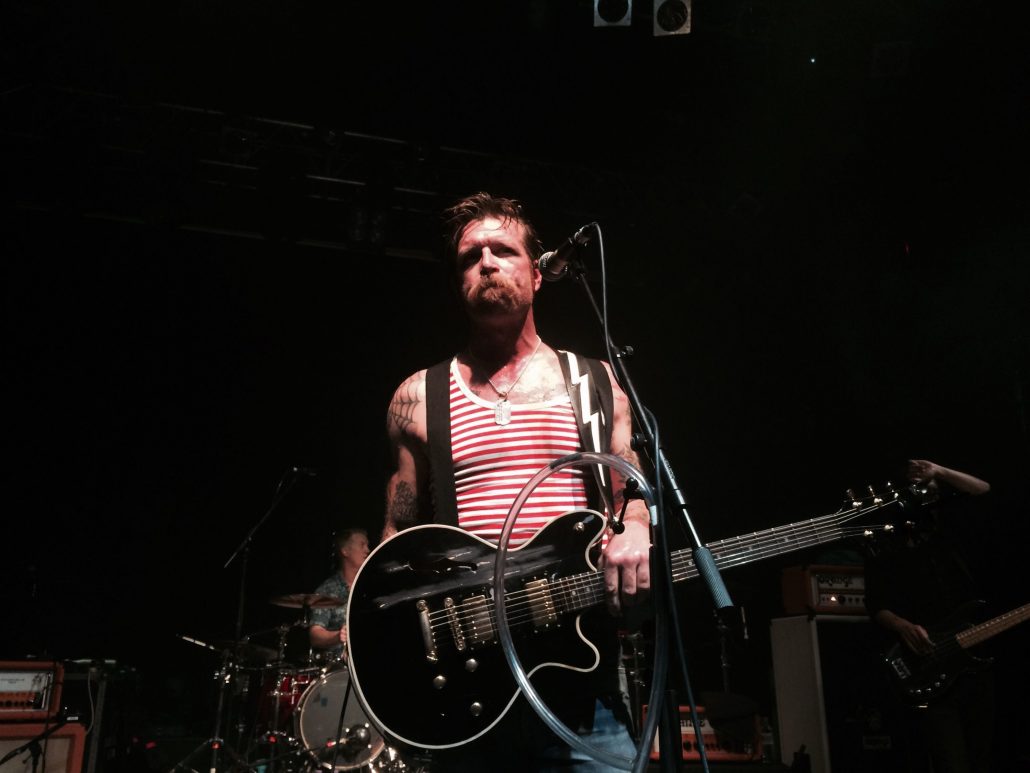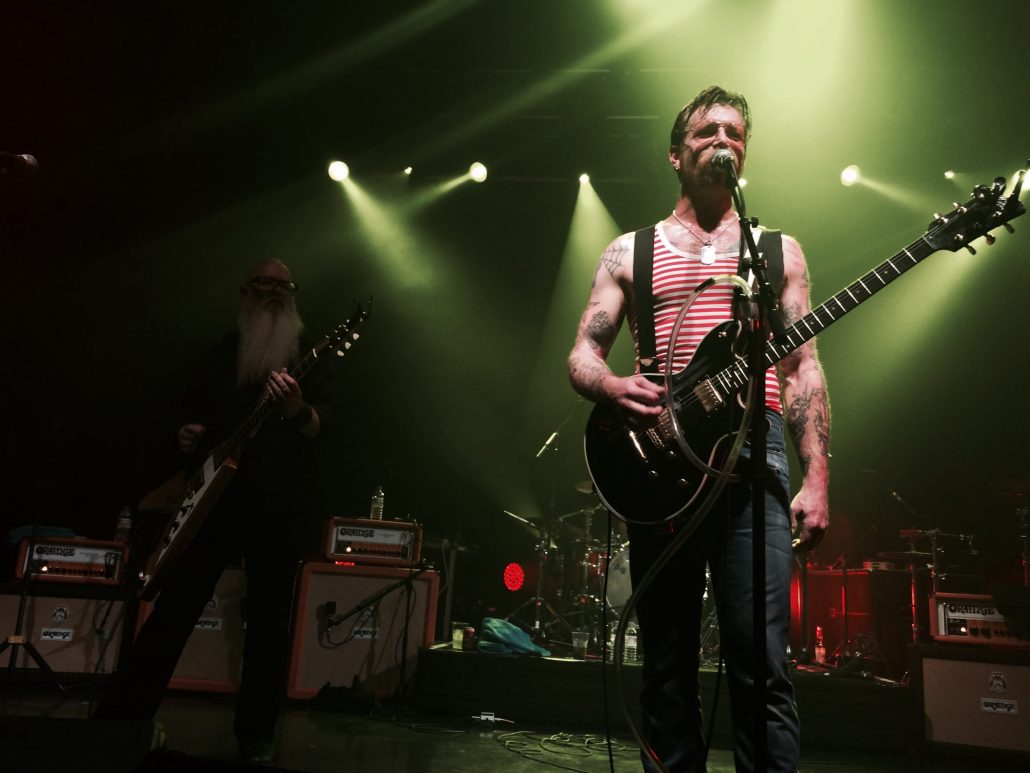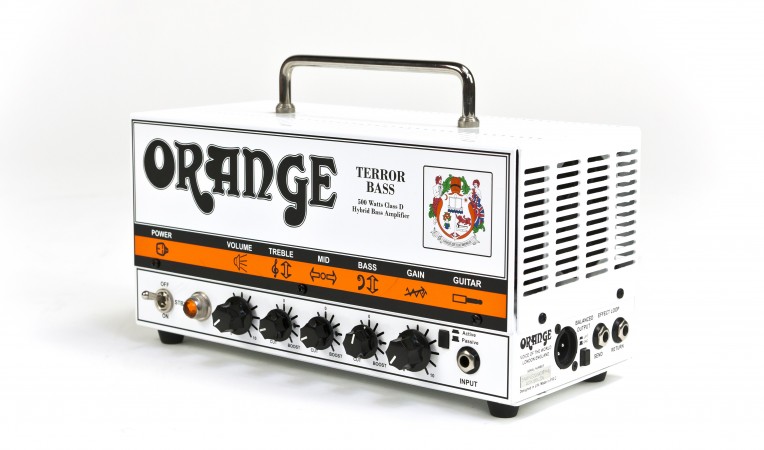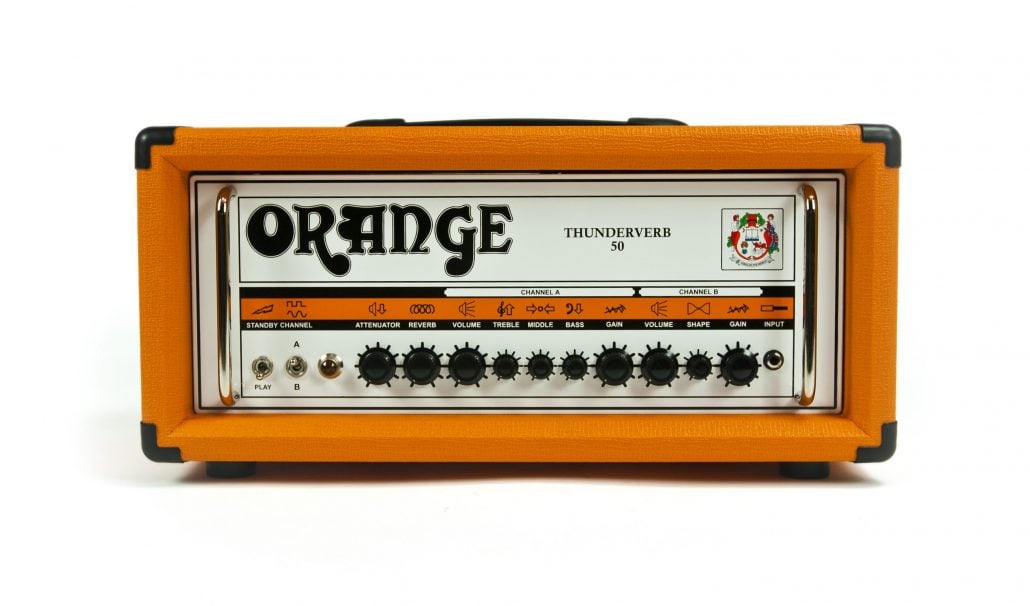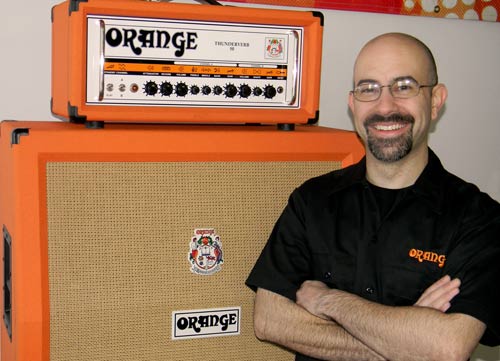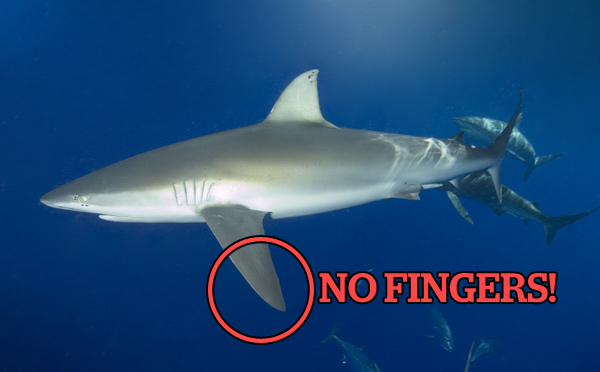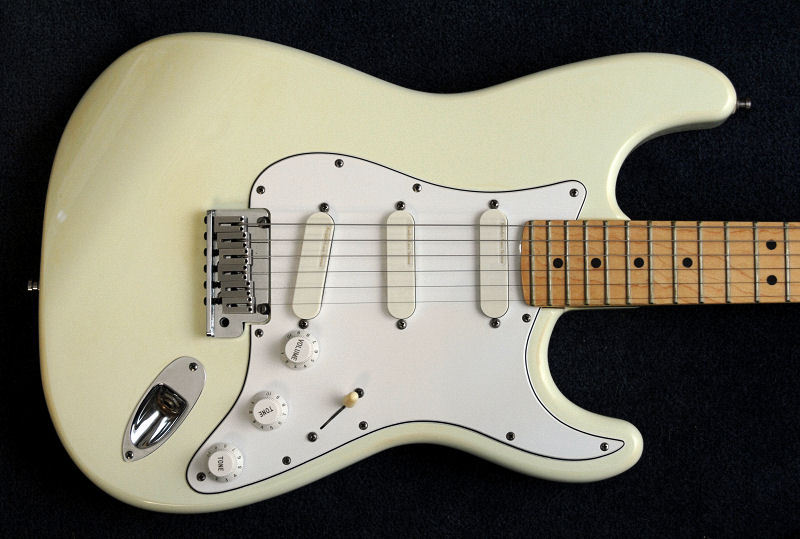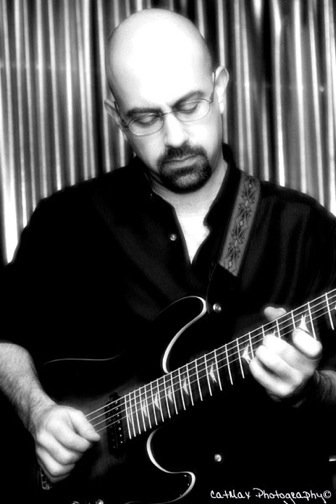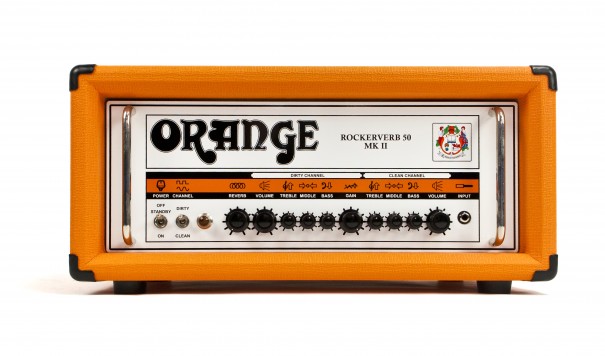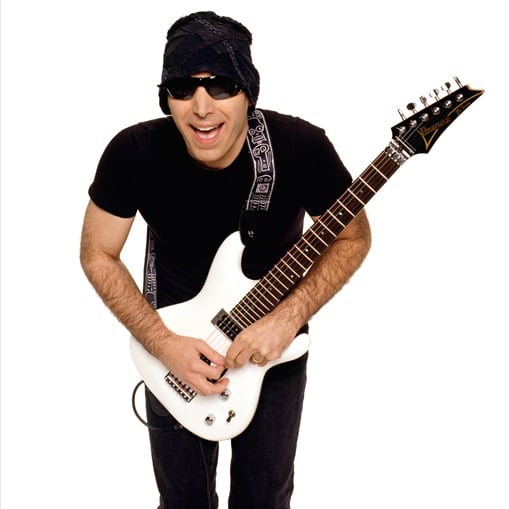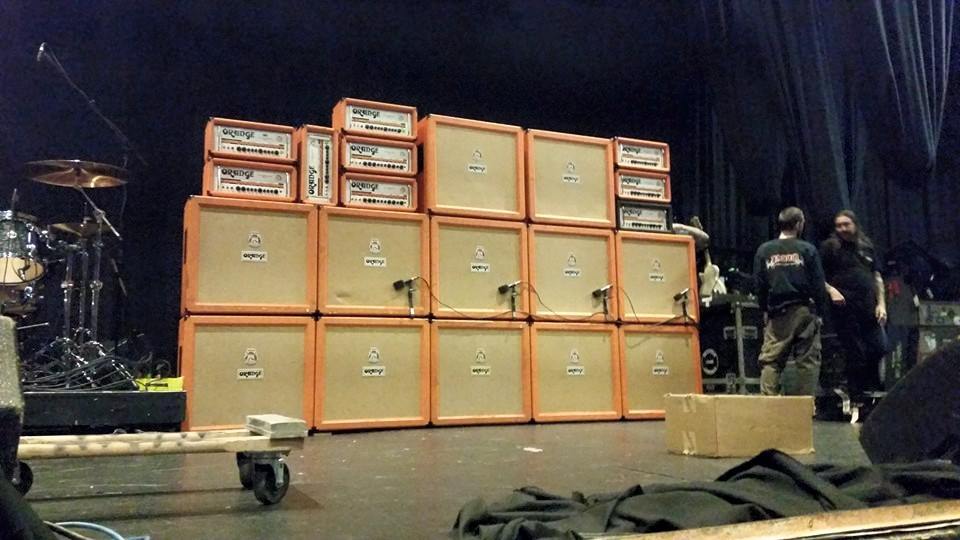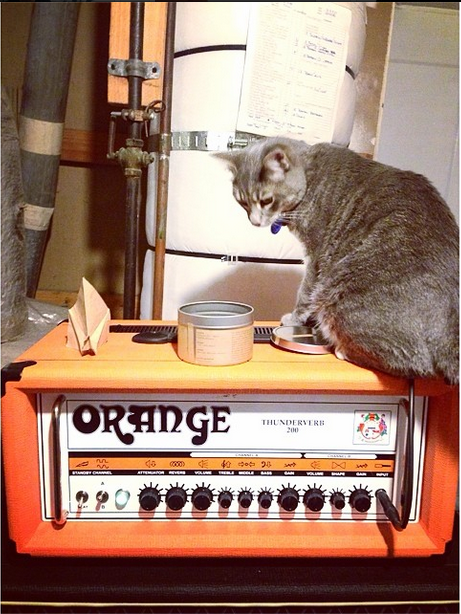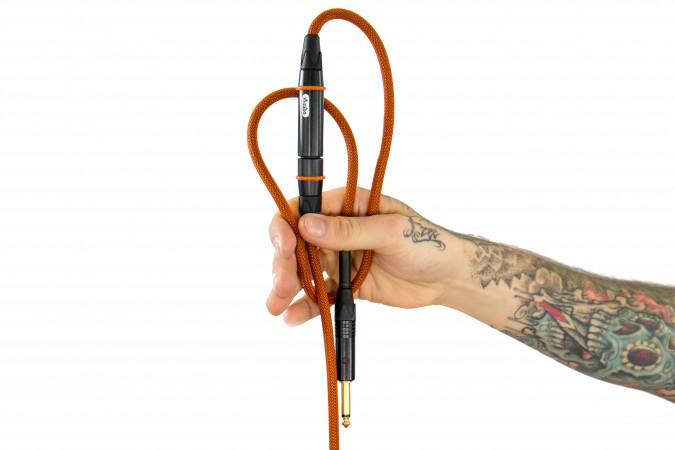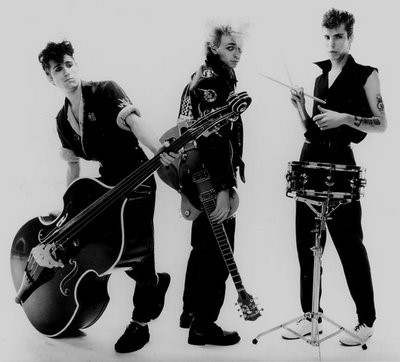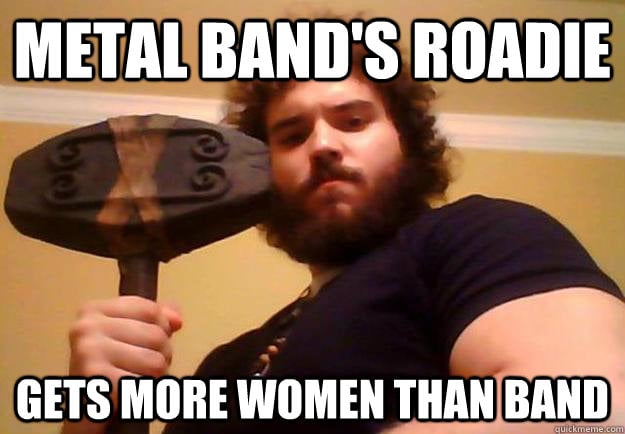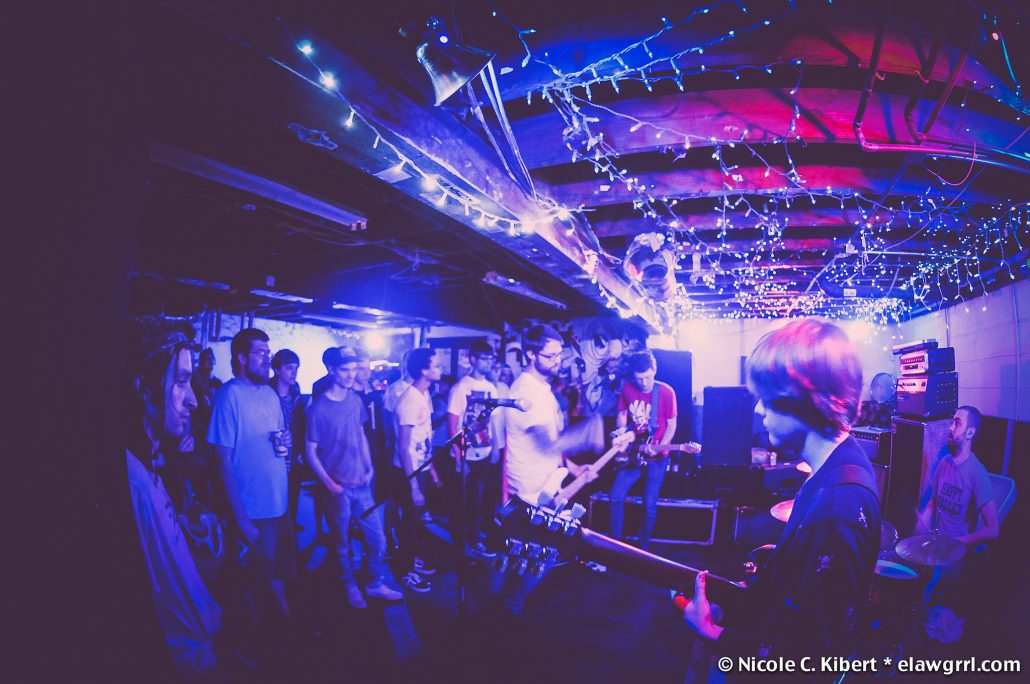By Orange Forum Admin, Billy Claire
Healthy? Unhealthy? Who’s to say – you decide!
It all started around 1978. I had been playing guitar for nine years and had gone through a Montgomery Ward amp; a Sound Electronics amp; an Ampeg VT-22; and had just recently purchased two Marshall Superleads and two Marshall 4X12 cabinets from Dave Amato, who now plays with REO Speedwagon. I played my ’66 Strat through them and I loved it. I used to play small clubs with both heads and cabs – we had to be ridiculously loud.

Vintage Montgomery Ward Combo
Anyway, I was taking a girl out on a first date into Boston and I was looking for something to do after dinner. I opened the newest issue of the Boston Phoenix and the Cellars By Starlight column mentioned a band called The Streets playing The Club in Cambridge. The column fairly raved about them so I figured we should check them out. Up to that point in the evening the date had been all right but when The Streets took the stage I was completely blown away. One of the guitarists was playing through a Superlead like mine but the other guitarist has this full stack of something orange… never had seen or heard anything like it. The Streets were incredible – fantastic songs with great guitar parts and clever lyrics. And the main guitar player was better than any guitar player I had ever seen or heard. But those Oranges stuck in my mind and I resolved to find out more about them.
After some time had gone by, the girl and I stopped dating, but I went to every Streets’ gig that came along. By this point, I had decided that I was going to start writing songs myself and that the cover band thing was pointless. I was still playing through my Superleads but I was getting increasingly dissatisfied with them. Still, they were the best sounding amps I could have since I had no idea what Orange really was.
After a number of gigs I got to know the guitarist with the Oranges. Come to find out, his name was John A. We got to talking after a Streets gig at The Channel nightclub and discovered that we shared a real love for The Beatles. The Streets were getting more popular and it was common to find yourself sitting next to someone from Aerosmith at one of their shows. Eventually, they joined Aerosmith on the Draw the Line tour as their opening act and not long after that imploded.
Fast forward to the mid-eighties and I’m trying to find out more information on those Orange amps. Amplifier books started to be published and I noticed some photographs in Ritchie Fliegler’s book, AMPS!: The Other Half of Rock and Roll, of a whole field full of Orange amps and cabinets. He had some good information on there, which I later discovered was taken verbatim from a 1973 Orange catalog owned by legendary soundman, Nitebob Czaykowski. Then, Aspen Pittman’s “The Tube Amp Book” had a small section on Orange with some information. Still, there was very little to be had and not all of it was accurate. I filed it all away, and then in 1988 Guitar Player magazine had an article called Used Amps, Ten Best Buys. In it, the author, David Hicks, talks about the Orange OR120’s and how they are amazing amps for the money, and, at the time, used Oranges were going for $200 – $300. But at the end of his column, he mentions that he has learned of a warehouse with several unsold Orange amps from the 70’s. I ended up contacting him and he told me that he had received so much flak from subscribers complaining that he was trying to sell amps through his column (he wasn’t) and he said, ‘Let me give you the information because it has caused me so many problems.’ I got the information and called John A. John had sold his Oranges a number of years earlier and was playing through Marshalls. His cousin was working for LaSalle Music in Boston as the office manager, and John worked an arrangement out with them to buy all of the Oranges with us getting a deal in the process. I ended up with a “new-in-the-box” 1978 Orange OR80M for $350. Just the smell of it was intoxicating. I plugged it in and was blown away by the sound. It had a master volume and suddenly I could get a great sound and be able to lower the volume and keep that tone. My Superleads only sounded good when they were turned up, and even with two of the tubes pulled, were still too loud for just about anywhere! But my new Orange was just incredible. And then a funny thing happened: people started coming up to tell me how great my sound was after gigs. And not just musicians – people who you might not expect to be able to tell the difference between a good tone and a great tone were coming up and complimenting me. That has been the case now ever since I started playing Oranges.
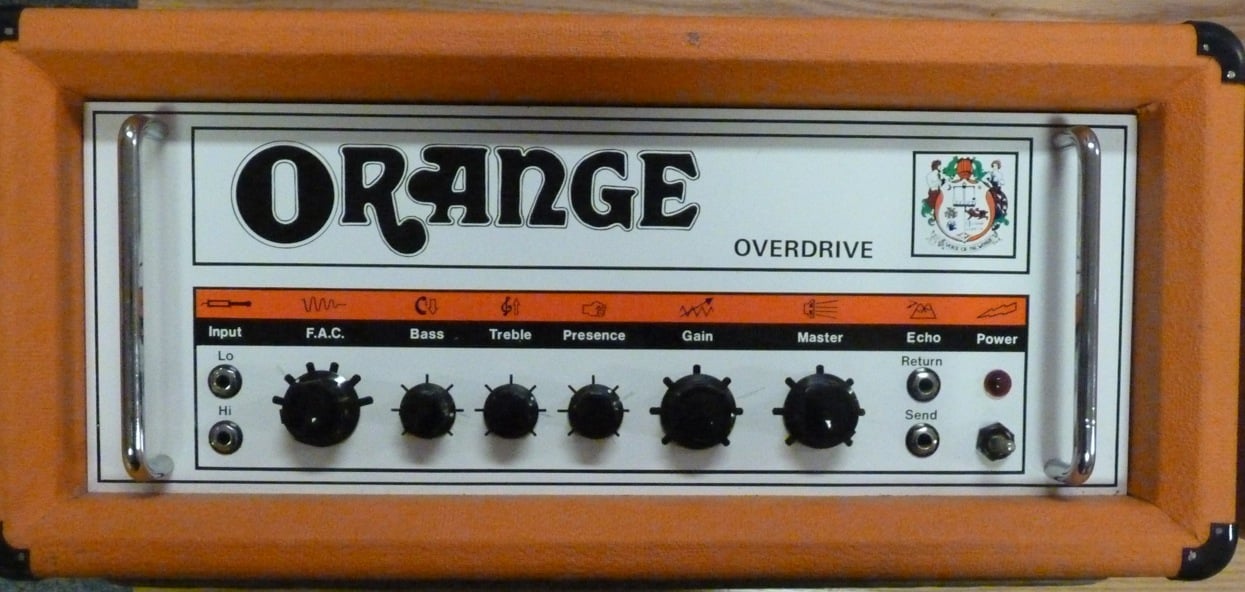
Orange OR80M Head
When I bought my Marshalls, I had heard that they could be unreliable. The other guitarist in my high school band, after all, had a Superlead and it was always breaking down. So when I bought my Superleads, I bought two of them so that I would have a back up. That sort of became a mantra in my life, so when I had the opportunity (and the money) I went looking for a second Orange as a back up. I eventually found another OR80M but this time it was a reissue of the original. I had heard that Gibson had something to do with bringing the name back, but I didn’t care because I had my back-up amp! I played out with my Oranges but discovered that my reliance on distortion pedals to boost my sound and thicken it up with gain like I did with my Marshalls wouldn’t work on my Oranges. What was this? It was as if pedals had no effect at all. In fact, I thought my pedal was broken but then I tried it in my Marshall and it worked fine. I discovered that I could set my Orange to the sound I wanted for my solos and then roll back the volume on the guitar and it would clean up nicely. ‘Just like the guitarists in the fifties,’ I thought.
Of course, I needed the matching cabinets. I religiously read through our local paper and the WantAdvertiser, which was the paper craigslist of its time. I would scour the musical instruments section but didn’t see anything. The week that I didn’t buy it, a friend of mine said, “Hey, did you see this week’s WantAdvertiser? Somebody is selling one of those Orange cabinets that you want.” Sure enough, there was an ad for an Orange 4X12 cabinet. I drove a half hour to go see the cabinet and there it was! I paid $200 for that cabinet. Then, within six months, another cabinet showed up and I went and got that one, too, this time for $250. The two cabinets were the same size but only one of them had any logos on the grillecloth. The cabinet without the logos also had these weird little cutouts for handles unlike the other cabinet which had proper metal handles like my Marshalls. Both were loaded with Eminence speakers and I would later discover that the cabinet without logos was an Orange Matamp cabinet.
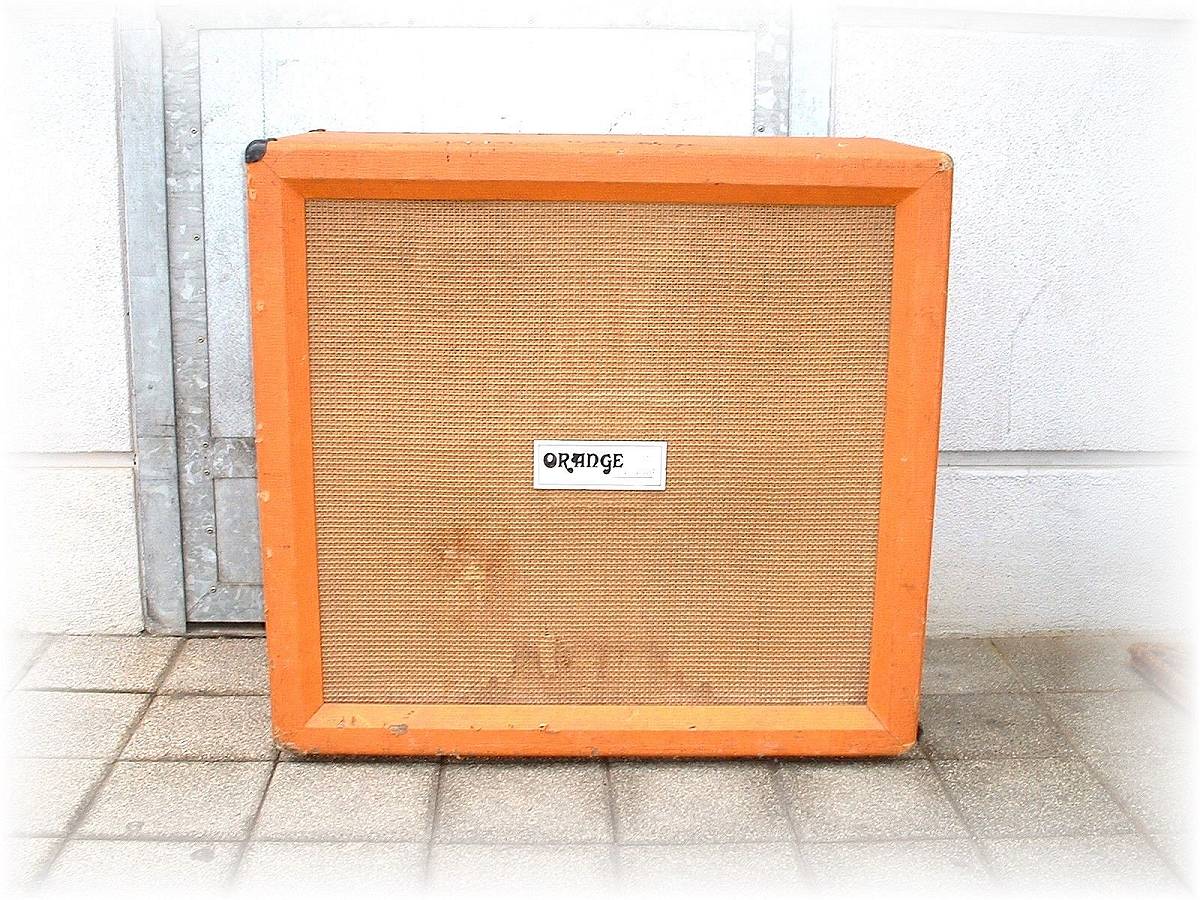
Vintage Orange Matamp Speaker Cab
Still, I kept searching for more information and got little tidbits here and there but nothing very comprehensive. Then I started reading that Orange was coming back and putting out a 140 watt amp with two channels! 140 watts! Well, I had to have one. I set aside some money and ordered it from the only store in Massachusetts that was a dealer. After months and months of waiting, my amp came in. It was wonderful to pull it out of the box and smell that same new Orange smell! I plugged it in and was just overwhelmed with the sound – but not just one great Orange sound but two amazing channels of pure tone heaven. It was fabulous but just incredibly loud! I loved it!
After a couple of years, Orange introduced a 30 watt version of the amp in a combo. I contacted my dealer and arranged to swap them an old ’67 Marshall 50 watt plexi head I had acquired for the Orange in an even deal. Again I waited and waited, but when it finally came in, I drove in to the dealer, opened the box, smelled that new Orange smell, and tested it out. Wow. Great tone like the AD140TC but at a lower volume and the output tubes’ contribution to the overall sound was amazing. I started using this amp for everything: live shows, rehearsing, and recording. And the compliments on my tone increased, this time mainly from musicians who were just blown away by the sound.
Meanwhile, Orange had launched a website and started a web forum. I joined because now I was finally going to get the answers about the history of Orange! But a strange thing happened – people were asking questions and no one from Orange was answering them. Fortunately, the information I had gleaned thus far enabled me to answer ninety percent of the questions asked, and when I didn’t have the answer, eventually Jason Green from Orange would answer. After this had gone on for some time, I emailed Jason and asked him why anyone from Orange wasn’t answering the questions on the forum. He said, “By the time we read a topic, you’ve already answered the question – would you be interested in moderating the forum?” I said I’d give it a shot, and here I am 11 years later!
At some point along the way, I remember reading that Orange had made the first digitally programmable amplifier back in the mid-70’s called OMEC. I thought it sounded interesting but no one I knew had ever seen one, and most had never heard of it. I began to regularly search eBay for Orange products. Some interesting things would appear from time to time and I started to acquire some interesting things. Not that I needed them, mind you, but I was becoming moderately obsessed with all things Orange. I bought a horn cabinet because it was there; found an Orange footplate from the drum set they sold in the early 70’s. Along the way I got a Tiny Terror and then decided it was time to get an Orange bass rig as I was starting to play bass for a friend’s band after their bass player had passed away.
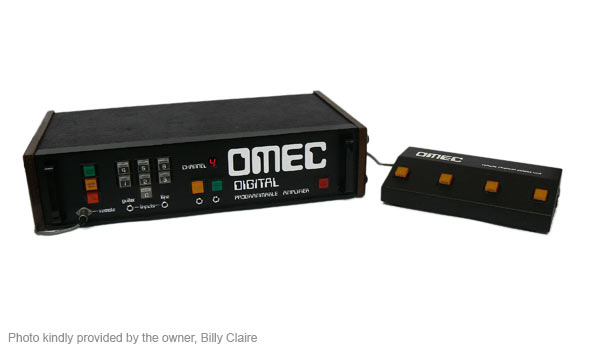
I took a trip to London to visit friends and on a whim, called Neil Mitchell at Orange HQ to see if I could finagle a visit. They said yes, and I took the train up to Borehamwood from London. Neil took me around and showed me everything – I played through a new Dual Terror and saw a lot of prototypes for amps that never went into production. Then Neil said, ‘Hey, Cliff would like to meet you!’ I thought it would be a quick handshake and introduction, but Cliff Cooper invited me into his office and we talked for over an hour about Orange. He showed me a giant pc board that they had found in a closet from an OMEC head. We had a wonderful time – Cliff was just a delight to talk with and such a warm and friendly man. When it was time to go, Cliff asked me how I had gotten to Orange HQ – I said I had taken a taxi from the train station and that I’d just call another. He said ‘I’ll give you a ride to the train’ and we drove down in his car. It was an unforgettable visit and I couldn’t thank him enough for his hospitality.
Back home, I continued my quest for Orange things on eBay and occasionally searched for OMEC. To my surprise, one late night on eBay, an OMEC finally turned up in California. That’s a story for another blog entry I’m afraid though!
After a lot of Oranges and a lot of research, I finally felt like I knew most of the Orange story. When Orange put out the Orange history coffee table book (to purchase in UK go here) the rest of the pieces fell into place. I was very proud to see my name in the book twice; being thanked for moderating the forum; and a photo credit for my OMEC head. The book was done right – it is a comprehensive tome on the company’s history and tells the whole story well. I would be remiss if I didn’t mention some of the wonderful people who I have met through Orange; Neil Mitchell, Mick Dines, Alex Auxier, and of course, Cliff Cooper, are some of the nicest and most helpful people I have ever met!
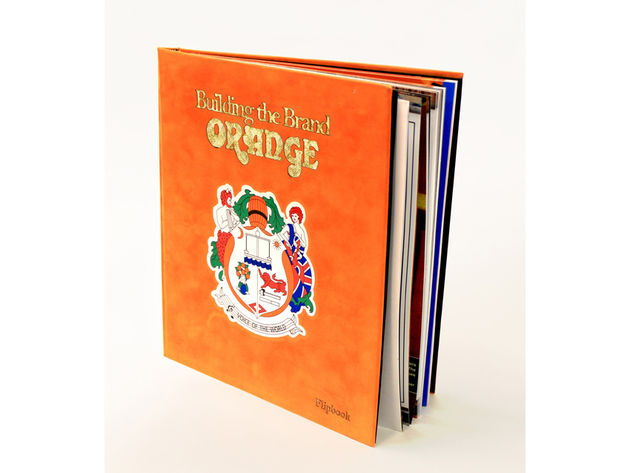
The Book of Orange Flipbook – Hardcover Edition
I’ve amassed quite a collection of Oranges now: many of the old catalogs, a Micro Terror, Tiny Terror, OR15, AD30TC, AD140TC, AD200B, a couple of little Crushes, and a bunch of cabinets, too. They’re all fantastic amps and I enjoy playing around and experimenting with the sounds I can get out of them. However, I finally found the amp of my dreams in the AD30TC I have to say. I’ve had lots of different amps along the way: my early Ampeg, several Fenders, and four different Marshalls, but the AD30TC still amazes me every time I turn it on and plug in. It’s simply the best sounding amp I’ve ever played. But I do have to say that whenever Orange introduces something new, I get this little twinge…
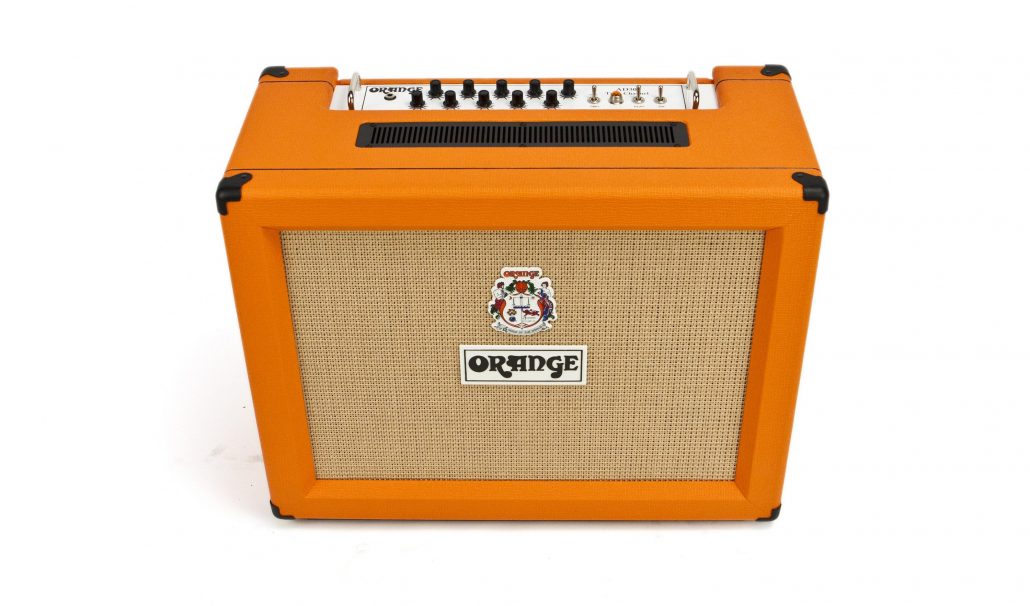
AD30 Combo
Cheers!
Billy Claire
Marlborough MA

